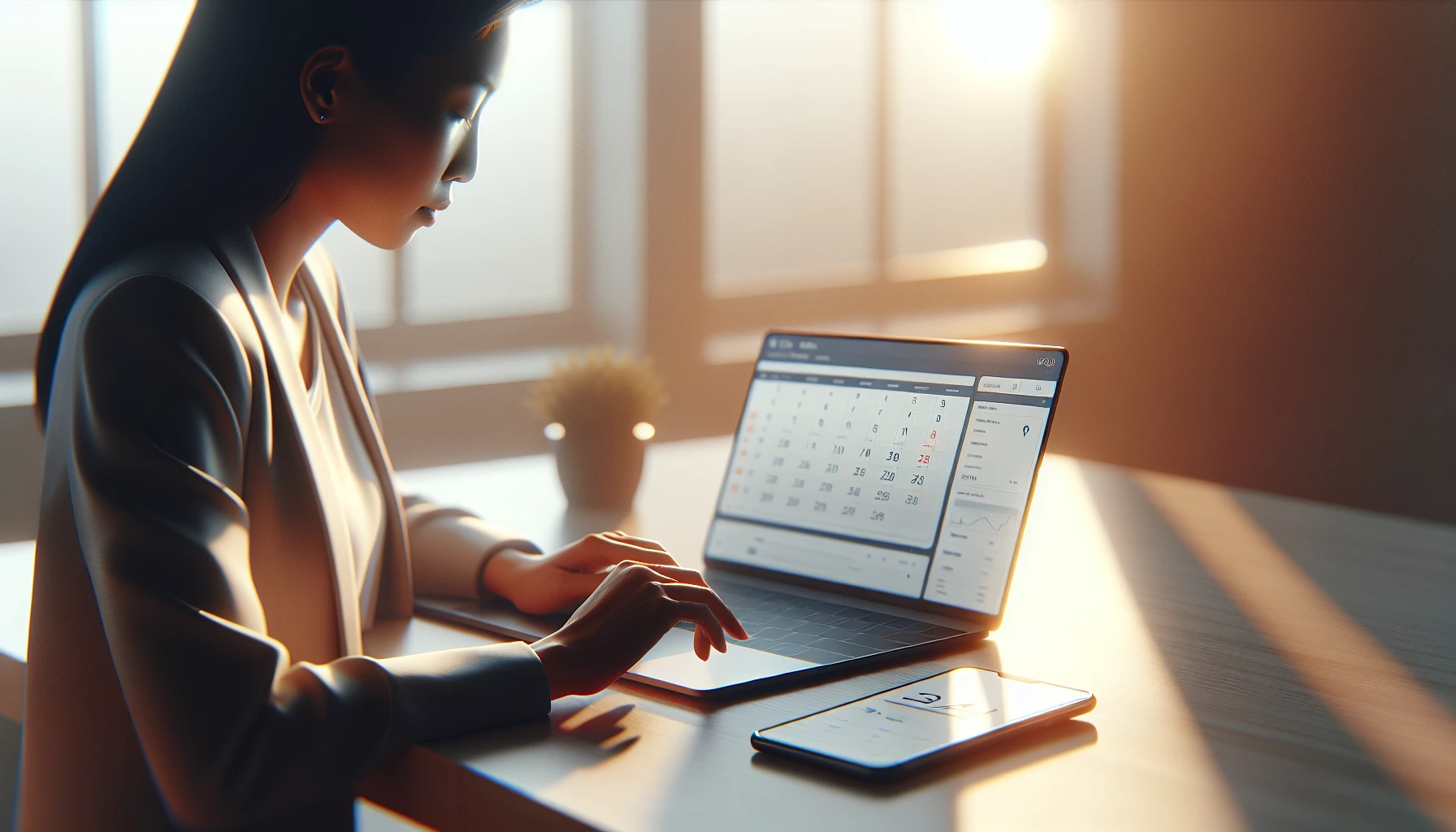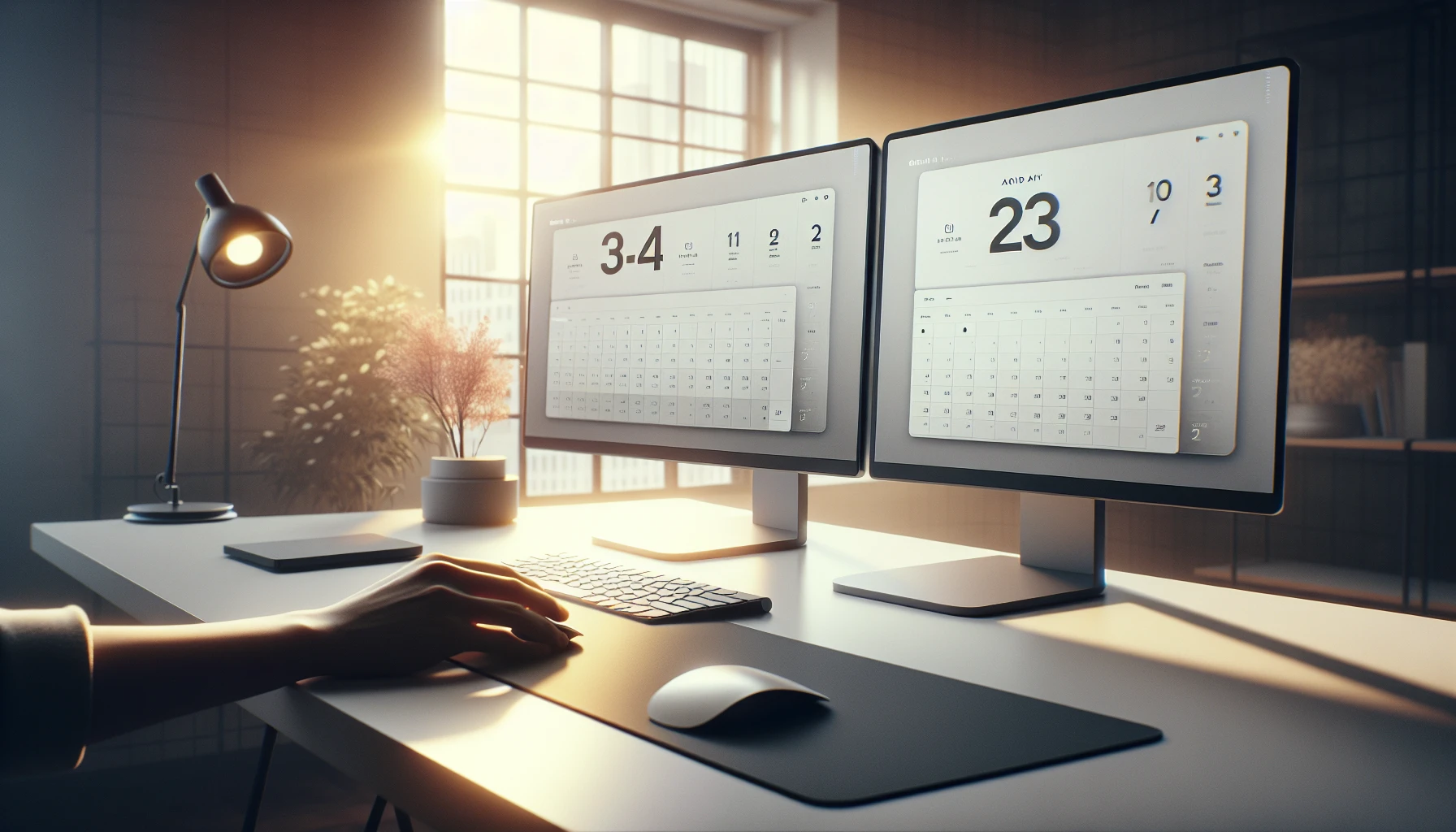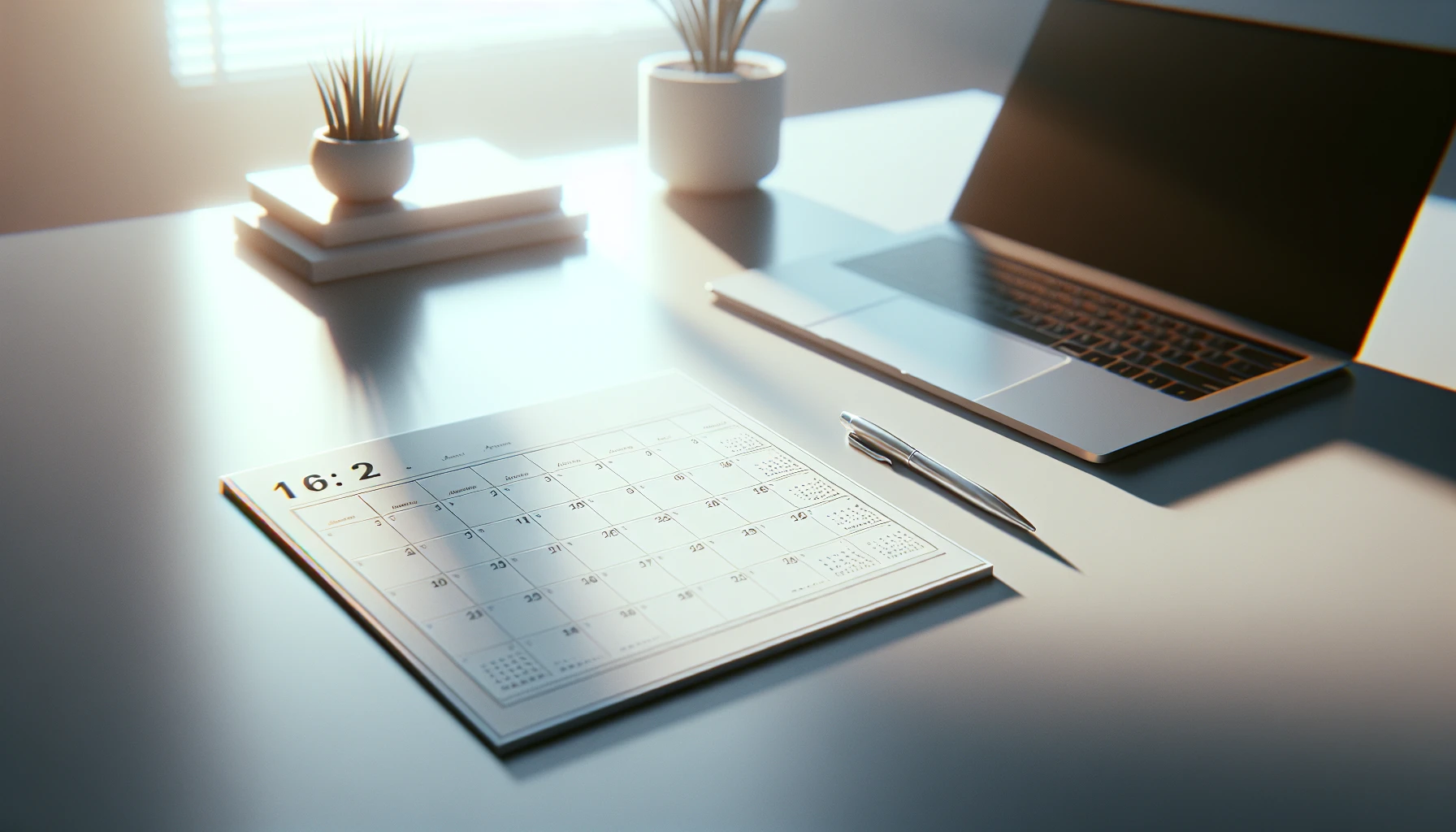· Ricardo Batista · 12 min read
How to Add Google Calendar to iPhone - easy meeting sync
Sync your Google Calendar on iPhone with clear steps; real tips for setting up and fixing common sync issues in one handy guide.

Discover how easy it is to sync and manage your calendars across different devices & apps, without getting lost in technical jargon. This guide walks you through setting up Google Calendar on your iPhone with simple steps troubleshooting common issues, and linking other meeting reminders all in one go. Perfect for anyone who wants a quick, effective setup.
Key Takeaways
- Setting up your Google Calendar on your iPhone is pretty simple using the built-in settings
- Troubleshooting common issues like missing events can usually be fixed by checking toggles and internet connection
- Linking to other calendars and scheduling tools like Outlook and Slack makes managing your time easier
- We show our expertise by automatically pinging the attendees that arrive late to your meetings, ensuring smoother and timely sessions
- Keeping your notifications active and checking your settings helps prevent most sync problems every time
Getting Started with Google Calendar on Your iPhone
Why Google Calendar?
Google Calendar is a smart tool for managing your daily schedule and ensuring no meeting slips through unnoticed. Beyond basic event management, it lets you set meeting reminders that automatically ping attendees who show up late, so you can quickly adjust your meeting flow. This is especially useful if you depend on meetings for work or study. The platform is user-friendly and widely supported, making it a top choice—even if you’re just stepping into the world of digital schedulers.
Setup Requirements
Before you jump in, make sure you have everything in place:
- A Google account that has an active Calendar subscription.
- An iPhone running iOS 13 or later.
- A stable internet connection.
- The Google Calendar app if you prefer a dedicated experience over using iOS native settings.
- A willingness to explore and tweak the settings for personal needs like meeting reminders.
Step-by-Step Guide: Adding Google Calendar to Your iPhone
Configuring Settings in Your iPhone
If you want to use the built-in iOS calendar app to access your Google Calendar, follow these simple steps:
- Open your iPhone Settings.
- Scroll down and tap on “Passwords & Accounts” (or “Mail” then “Accounts” in some iOS versions).
- Tap on “Add Account” and select “Google.”
- Enter your Google account credentials.
- Make sure the “Calendars” toggle is turned on when prompted.
- Once added, open your iPhone’s native Calendar app to see your Google calendar events.
This method syncs your events directly into iOS. It is handy if you want a unified view of your tasks. Also, note that any meeting reminder settings you’ve defined in Google Calendar will carry over via sync in many cases.
Using the Google Calendar App
If you prefer a dedicated app, here is how you can set it up:
- Download the latest version of the Google Calendar app from the App Store.
- Open the app and sign in with your Google account.
- The app syncs automatically with your Google Calendar events.
- For notifications and meeting reminders, tap the three-line menu button, navigate to Settings, and adjust your notifications to suit your needs.
Using the app often gives you more granular control over reminders and notifications, including the feature for automatically pinging late attendees, assuming your meeting settings support that integration.
Troubleshooting Common Sync Issues
Sometimes, sync issues pop up that can be a bit annoying, especially if you rely on meeting reminders to keep everyone on time.
Shared iCloud Calendars Conflicts
If you use both iCloud and Google Calendar, you might notice conflicts. For example, events may not display correctly due to overlapping settings. Here are some tips to troubleshoot:
- Ensure that your iCloud calendar and Google Calendar are clearly distinguished in your calendar view.
- Temporarily disable one calendar set to test if the issue persists solely on Google Calendar.
- Double-check that the correct time zones and event details are set for each calendar.
Following these steps can help avoid confusion, ensuring that reminders meant for Google Calendar don’t conflict with any iCloud events.
App Password Fixes and Security
Security is key when adding third-party accounts to your iPhone. If you have enabled two-factor authentication on your Google account, you might need to generate an app-specific password for the calendar connection. To do this:
- Visit your Google Account Security Settings.
- Find the “App passwords” option.
- Generate a new password for your iPhone’s calendar integration.
- Enter the new password when prompted by your iPhone.
This extra step enhances your security and improves the syncing process. It may seem a bit technical at first, but once you generate the password, things should work without additional prompts.
Integrating Google Calendar with Other Scheduling Tools
Google Calendar doesn’t work in isolation – it’s designed to integrate with various other tools you might already be using. This can be a game-changer, particularly if you often need to send meeting reminders to keep everybody on track.
Integration with Outlook
If you work with Microsoft Outlook as well, syncing Google Calendar with Outlook can streamline your scheduling process. You can either import your Google Calendar into Outlook manually or set up an automatic synchronization through third-party services. Doing so means all your meeting data, including late arrival reminders, stays in sync—minimizing the risk of miscommunication.
Integration with Slack
Many teams rely on Slack for daily communication. Integrating Google Calendar with Slack can send reminders directly to your channels. For instance, you can configure Slack to notify you about upcoming meetings or automatically ping members who are late:
- Use Slack’s calendar integrations or bots available on the Slack App Directory.
- Customize the bots to send reminders at predefined intervals, ensuring everyone is on the same page.
Linking with Other Meeting Tools
Often, you might want to incorporate Google Calendar with other apps like How To Use Google Meets, or additional tools for handling meeting invites and follow-ups. Many of these tools offer built-in integration features that sync seamlessly with Google Calendar. This means meeting reminders, like those that automatically ping late attendees, can also be set up directly via such integrations.
Community-Backed Troubleshooting Tips
When walk-throughs don’t work as expected, community advice can often provide the best advice. Forums and help sites offer insights into common pitfalls and clever fixes.
Insights from Stack Overflow and Scoutbook Help
Several users on Stack Overflow have commented on sync issues between different calendar systems. Common community suggested fixes include:
- Refreshing the account settings by toggling the calendar sync off and back on.
- Clearing cache or reinstalling the Google Calendar app.
- Double-checking your notification settings to ensure they’re not getting overridden by system defaults.
Similarly, Scoutbook Help offers advice for integrating multiple calendars into one view. These forums can be a resource for troubleshooting should unexpected issues arise. Often, a quick search will reveal that someone else has experienced the same problem and found a fix.
Extra Tips from Google Calendar Help and Office Reddi Apps Integration Guide
Google Calendar Help is frequently updated with the latest troubleshooting tips. Visit their support pages if you see persistent sync errors or need updated instructions on advanced features.
The Office Reddi Apps Integration Guide is another resource where you might find helpful details about merging different scheduling tools. These external guides often explain how to refine settings like meeting reminders to ensure late arrivals are automatically pinged. Using these resources provides additional assurance that you’re not missing a hidden tweak that improves your workflow.
Meeting Reminders: Automating Late Arrival Pings
How Meeting Reminders Help Your Workflow
Meeting reminders, especially those that adjust based on participant arrival times, save time and help everyone stay on schedule. If an attendee is late, the system automatically pings them to keep things moving. Here’s why that can be a boon for busy schedules:
- It reduces awkward downtime at the beginning of meetings.
- It helps track attendance more accurately.
- It ensures that the flow of conversation isn’t interrupted because someone was late.
- It provides a digital log of attendance that can be useful during follow-ups.
This level of automation can be especially useful for teams that rely heavily on punctuality to keep projects on track.
Tools and Templates for Automated Reminders
Setting up automated reminders might sound daunting, but several user-friendly tools can simplify the process. Many services provide templates and pre-built scripts that do all the heavy lifting for you. For example, you might explore:
- Meeting reminder templates available in the Google Calendar settings.
- Customized scripts that notify late attendees automatically.
- Integration with meeting tools like How To Send Zoom Meeting Reminder To Participants that deliver timely pings.
Additionally, if you’re looking into other platforms to schedule reminders, check out How To Send A Meeting Reminder Email for some interesting email-based solutions or How To Send Whatsapp Reminder if you prefer messaging apps. These templates reinforce the idea that setting up meeting reminders can be a streamlined process with the right tools.
For those integrating multiple tools, consider using a single hub that merges notifications from various sources. Many apps now support cross-platform reminders where your Google Calendar events prompt reminders on Slack, Outlook, or even WhatsApp. This makes it easier to maintain a unified workflow, avoiding the hassle of managing each tool separately.
- Make sure to test your setup with a few sample meetings.
- Experiment with different intervals for sending the reminder.
- Adjust settings based on feedback from meeting participants.
The flexibility of these tools means you can quickly adapt your system to the unique flow of your meetings. Plus, a slight tweak in how the reminders behave might improve overall punctuality, making the whole process more efficient for everyone.
Sometimes a system that pings attendees automatically isn’t enough. Adding personal touches to the reminder content can help—like a short note encouraging punctuality. By keeping the tone friendly rather than formal, it’s easier for participants to take the reminder as a helpful nudge rather than a nag.
Practical Tips When Syncing and Reminding
Even though setting up the calendar and reminders might feel straightforward, a few practical pointers can save you repeated trips to the settings menu:
- Regularly update your iPhone OS and Google Calendar app to ensure compatibility.
- Periodically check your Google account’s security settings, especially if you use app passwords.
- Take a minute every couple of weeks to review integration settings in third-party apps, ensuring that no update has changed their functionality.
These small steps ensure that both your calendar and the linked meeting reminder settings work harmoniously without unexpected system hiccups.
Setting things up might require a bit of manual intervention initially, but once everything is in place, the system can practically run by itself. Incorporating community tips, official help resources, and integration checklists into your routine makes managing multiple calendars more transparent and less error-prone. Whether you’re using the native iOS Calendar app or the dedicated Google Calendar app, you’ll find that even minor adjustments can have a big impact on your efficiency.
This approach gives you the freedom to manage your meetings with minimal stress. With automated reminders in place, you can focus more on getting work done rather than chasing latecomers. Every small improvement made in setup or sync quality directly contributes to smoother meeting experiences and stronger adherence to schedules.
By investing a little time into understanding these settings and integrations, you can build a system that not only keeps track of your events but actively improves meeting punctuality. The key is staying open to periodic tweaks and updates as you learn from real-world usage and feedback.
Finally, if ever in doubt or if you encounter an unusual glitch, remember that online communities and official guides are excellent fallback resources. Whether you’re referencing a forum post on Stack Overflow or a help note on Scoutbook Help, you can often find that a simple shared experience gives you the perfect solution you’re looking for.
Conclusion
We covered a lot in this guide about syncing your Google Calendar to your iPhone; it’s been a smooth journey through the basic steps and some common hiccups that might pop up. You learned how to add your calendar through your iPhone settings and use tools like the Google Calendar app to keep things simple and organized. We also touched on troubleshooting common issues, so if something doesn’t work perfectly the first time, you have a few ideas to try out.
The most important takeaways here are knowing the steps to set up your calendar, understanding where to find help when problems arise, and using extra tools to simplify meeting scheduling. Our expertise at Meeting Reminders in automatically pinging the attendees that arrive late can help make your meetings run smoother and keep everyone on track. Now, give these steps a try, check for errors if things go off, and always remember there’s a whole community ready to help sort things out.
Frequently Asked Questions (FAQs)
How do I add Google Calendar to my iPhone?
To add Google Calendar to your iPhone, open the Settings app and go to Passwords and Accounts. Tap Add Account, then choose Google. Follow the on-screen prompts, ensuring you allow calendar syncing. Once setup, your events will show up in the iPhone Calendar.
What should I do if my Google Calendar isn’t syncing with my iPhone?
If your Google Calendar isn’t updating on your iPhone, check your account settings to make sure Calendar toggle is activated. Verify your internet connection, and if issues persist, try removing and readding the account; sometimes minor tweaks help fix syncing problems.
How can I set up notifications for my Google Calendar on iPhone?
To set notifications for events, open the Calendar app on your iPhone, tap on an event and select Edit. Then choose Alarm, adding a reminder that suits your schedule. This makes sure you never miss an appointment and helps keep your day organized.
Can I integrate other scheduling tools with my Google Calendar on my iPhone?
Yes, you can integrate other tools like Outlook and Slack with your Google Calendar. For example, Outlook lets you connect your account and sync events, while Slack can send reminders for upcoming meetings. This helps centralize your schedule across multiple platforms.
How does the expertise of Automatically ping late attendees improve my meeting management?
Our system takes meeting management up a notch by automatically pinging attendees that arrive late to your meetings. This feature helps keep meetings on track and ensures everyone is aware of their schedules. It is part of our overall service to maximize efficiency, and you can get more details at Meeting Reminders.



